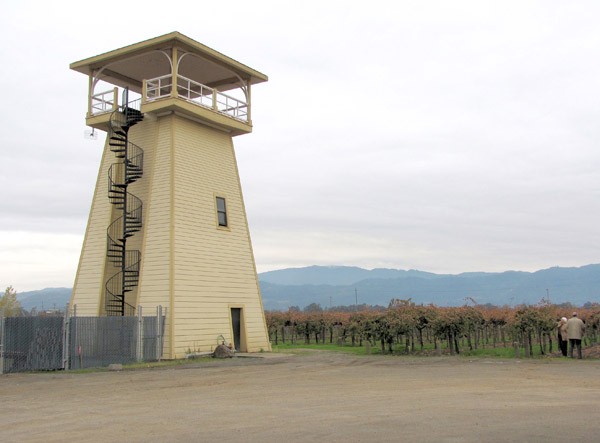If you own a tankhouse, you probably know Tom Cooper.
Cooper, an 82-year-old Santa Rosa resident, spent three years studying the antique water towers that sprinkle the rural California countryside like rustic battlements. But Cooper didn’t simply read up on tankhouses from the local library; with only a handful of articles and masters theses ever printed on the subject, he did the only thing he could—he scouted them out himself.
On a recent afternoon drive, the retired pharmaceutical marketer points out seven towers in the space of roughly two square miles near Bennett Valley. Some have been refashioned into living spaces, others are falling into paint-chipped ruin; none of them is particularly noticeable unless, like Cooper, you are looking for one. As he drives, he recounts details learned from knocking on doors. He knows who grows apples, whose tankhouse is inhabited with owls, who’s never home.
Cooper stops the car and we approach a white, three-story tower topped with a small windmill. This is the building on the cover of Cooper’s self-published book Tankhouse and the structure that started his fascination.
“The windmill drove a pump down in the well, which pumped water into the redwood tank on the third story,” he explains from a garden surrounding the building. He points out that gravity-pressured water flowed from the tower to the house at just eight pounds per square inch (average household pressure is now between 40 and 50 psi). “It took a long time to fill the washing machine,” he says.
Like our tour, Cooper’s book is full of oral-history nuggets. There’s the tankhouse owner who found the barrel of an 1865 12-gauge muzzle-loading shotgun under his tower. Or the one and only Catholic tankhouse—built to serve a rectory—decorated with the keys of St. Peter and a statue of the Madonna and Child. Or the tower decorated with tribal masks and a severed plastic skeleton.
Between such details, Cooper recounts the history of the three-story towers, found almost exclusively in Northern California. They provided water to early settlers, starting around 1850. The state’s plentiful redwood was an essential building material; acclimated to creekbeds and fog, redwood could hold water without rotting. Tankhouses continued to be built until the 1930s, when sinking water tables and municipal water systems led to their decline.
On his blog, also called “Tankhouse,” Cooper has posted an email he received in September from a woman who recognized a tower in his book. It stood on a 16-acre, Sonoma County farm owned by her Italian immigrant parents, shown in old photos she submitted of the tankhouse, painted white, surrounded by a clan of accordion players and smiling children. When the woman was eight, her father died and her mother struggled as the farm fell into disrepair. “By the time she sold our home in 1972, time had already begun to take its toll,” she writes of the leaning, windowless shack that remains.
Cooper said he was initially interested in tankhouses because of their elaborate technology, adding that “it’s an ingenious, perfectly green system.” But the kind of exchange illustrated above gave life to his research.
“The mechanics are fascinating,” Cooper says, “but I loved actually hearing from people.”











